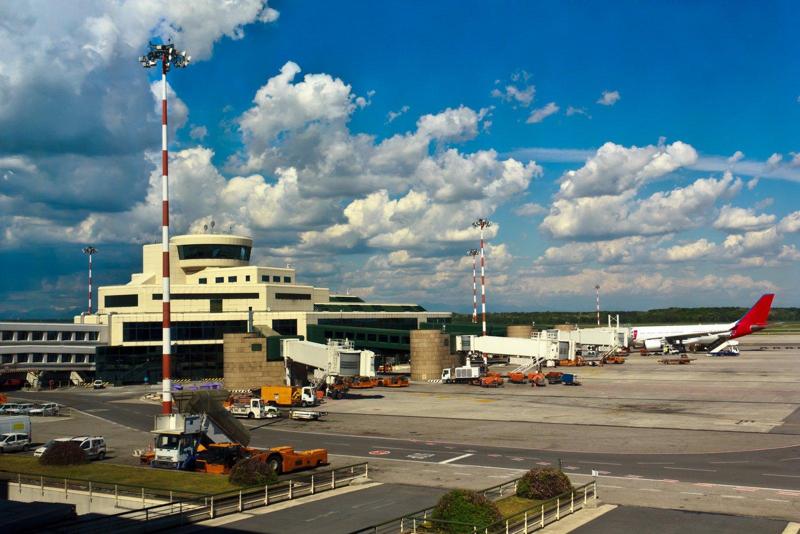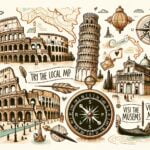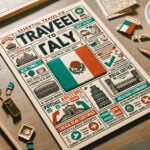Italy is a country known for its rich history, vibrant culture, and delectable cuisine. From the iconic ruins of Rome to the romantic canals of Venice, Italy offers a diverse and captivating experience for travelers. With this ultimate travel guide, you’ll learn everything you need to know about embarking on an unforgettable adventure in Italy.
As you plan your trip to Italy, it’s important to understand the country’s unique transportation system. From trains to buses and even renting a car, navigating Italy’s transportation options can be both efficient and rewarding. Additionally, knowing what essentials to pack for your Italian journey can make all the difference in having a smooth and comfortable trip.
Italy also boasts an array of must-visit destinations that cater to all types of travelers. Whether you’re interested in exploring iconic cities like Rome and Florence or seeking out hidden gems off the beaten path, this guide will provide recommendations for making the most of your Italian adventure. So sit back, relax, and get ready to immerse yourself in the beauty and charm of Italy.
Navigating the Italian Transportation System
Italy boasts an extensive and efficient transportation system that makes it easy for travelers to explore the country’s diverse regions. Whether you’re navigating the bustling streets of Rome or venturing through the picturesque countryside, understanding Italy’s transportation options is essential for a smooth and enjoyable trip.
When it comes to public transportation, Italy offers a wide range of choices, including trains, buses, trams, and metros. The train system, in particular, is known for its reliability and extensive network that connects major cities as well as smaller towns.
Purchasing tickets for train travel can be done at the station or online through the Trenitalia website or other booking platforms. It’s important to familiarize yourself with the different types of trains available in Italy, including high-speed trains (Frecciarossa) and regional trains (Regionale), each offering varying levels of speed and comfort.
For those who prefer the flexibility of driving, renting a car in Italy allows travelers to venture off the beaten path and explore at their own pace. However, it’s worth noting that Italian roads can be narrow and winding, especially in rural areas, so confident driving skills are recommended. Additionally, certain cities have restricted traffic zones where only authorized vehicles are permitted. It’s advisable to research these zones ahead of time to avoid any unexpected fines.
| City Pair | Train Travel Time |
|---|---|
| Rome – Florence | 1 hour 30 minutes (high-speed train) |
| Florence – Venice | 2 hours 5 minutes (high-speed train) |
| Rome – Naples | 1 hour 10 minutes (high-speed train) |
Packing for Italy
When packing for a trip to Italy, it’s essential to consider the time of year and the destinations you’ll be visiting. Italy experiences a range of climates, from hot summers in the south to snowy winters in the north, so your packing list will vary depending on when and where you plan to travel.
Packing for Different Seasons
If you’re visiting Italy in the summer, lightweight and breathable clothing is a must, especially if you plan to explore cities like Rome or Florence where temperatures can soar. In the spring and fall, layers are key as the weather can be unpredictable. And if you’re traveling to northern regions like Milan or the Italian Alps in winter, pack warm clothing including a heavy coat, gloves, and sturdy boots.
Efficient Packing Tips
Regardless of when you choose to visit Italy, it’s always best to pack light and efficiently. This means choosing versatile clothing pieces that can be mixed and matched numerous ways. It’s also important to consider comfort since exploring Italian cities often involves lots of walking on uneven cobblestone streets.
Essentials for Your Trip
In addition to clothing suitable for the season and destination, there are some essentials you should always have while traveling through Italy. These include comfortable walking shoes, a good quality camera or smartphone for capturing memories, an adapter for European electrical outlets, sunscreen, sunglasses, a hat, reusable water bottle (which can be refilled at public fountains), a small umbrella or rain jacket if traveling during wet seasons.
By following these packing tips and considering what essentials are needed during different times of year or locations within Italy will ensure that travelers have a smooth and comfortable trip as they explore this beautiful country.
Understanding Italian Etiquette and Customs
Italy is known for its rich cultural heritage, and it is important for visitors to understand Italian etiquette and customs in order to interact with locals and blend in seamlessly. When it comes to social norms, Italians are known for their warmth and hospitality.
Greeting locals with a friendly “Ciao” or “Buongiorno” can go a long way in making a positive first impression. In addition, shaking hands is common when meeting someone for the first time, and it is important to maintain eye contact during conversations as a sign of respect.
When dining in Italy, there are some key etiquette practices to keep in mind. First and foremost, it is considered impolite to ask for substitutions or modifications to dishes when dining at restaurants. It’s also important to note that tipping at restaurants is not as customary in Italy as it is in other countries. While some establishments may include a service charge, leaving a small tip for exceptional service is appreciated but not required.
As with any country, it’s essential to be respectful of local customs and traditions while visiting Italy. This includes dressing modestly when visiting religious sites such as churches or cathedrals and being mindful of noise levels in public spaces. By embracing Italian etiquette and customs, travelers can forge meaningful connections with locals and enrich their overall travel experience.
| Italian Etiquette Tips | Key Practices |
|---|---|
| Greeting Locals | Use “Ciao” or “Buongiorno” as greetings; maintain eye contact during conversations |
| Dining Etiquette | Avoid asking for substitutions; tipping at restaurants is not customary |
| Respecting Local Customs | Dress modestly at religious sites; be mindful of noise levels in public spaces |
Must-Visit Destinations in Italy
When planning a trip to Italy, travelers are often drawn to the country’s iconic cities and culturally rich regions, but there are also hidden gems that offer a more authentic Italian experience. Whether you’re looking to explore historic landmarks, soak up the beauty of coastal landscapes, or immerse yourself in local culture, Italy has something for every type of traveler. Here are some must-visit destinations in Italy that should be on every traveler’s itinerary:
- Rome: As the capital city of Italy, Rome is brimming with ancient history and iconic landmarks such as the Colosseum, Roman Forum, and Vatican City. Visitors can also enjoy the vibrant street life and indulge in delicious Italian cuisine at local trattorias.
- Florence: Known for its Renaissance art and architecture, Florence is a cultural hub with world-renowned museums like the Uffizi Gallery and the Accademia Gallery. Travelers can wander through charming cobblestone streets and visit the famous Duomo cathedral.
- Venice: With its network of canals and romantic ambiance, Venice is a unique destination that captivates visitors with its stunning bridges, grand palaces, and historic piazzas such as Piazza San Marco. A gondola ride along the canals is a quintessential Venetian experience.
- The Amalfi Coast: This picturesque stretch of coastline in southern Italy offers breathtaking views of steep cliffs, colorful villages perched on hillsides, and crystal-clear waters. Travelers can explore charming towns like Positano and Ravello while indulging in fresh seafood dishes.
In addition to these well-known destinations, Italy boasts several hidden gems that provide an opportunity to escape the crowds and discover lesser-known treasures:
- Siena: Located in Tuscany, Siena is renowned for its medieval architecture and annual horse race known as the Palio di Siena. The city’s historic center is a UNESCO World Heritage site filled with narrow streets and beautiful Gothic buildings.
- Bologna: Often referred to as “La Dotta” (The Learned) due to its prestigious university, Bologna is a city known for its culinary traditions and well-preserved historical landmarks. Visitors can enjoy exploring medieval towers and arcades while savoring regional delicacies like tortellini pasta.
No matter where your travels take you in Italy, each destination offers its own unique charm and beauty that will leave a lasting impression on any visitor.
Italian Culinary Delights
When it comes to Italian cuisine, the options are endless and the flavors are unforgettable. From pasta and pizza to gelato and espresso, Italy is a food lover’s paradise. When visiting Italy, one of the best ways to immerse yourself in the local culture is through its culinary delights. Each region of Italy has its own specialties and traditional dishes that are a must-try for any traveler.
In addition to exploring traditional Italian restaurants, be sure to seek out local markets and street food vendors for an authentic taste of Italy. In cities like Rome, Florence, and Naples, you can find bustling markets where you can sample fresh produce, cheese, cured meats, and other local products. Street food vendors also offer delicious snacks such as arancini (rice balls), panzerotti (fried dough filled with cheese or tomato), and fried seafood in coastal regions.
To truly experience Italian cuisine at its finest, consider participating in a cooking class or food tour during your visit. These experiences not only allow you to learn about the ingredients and techniques used in Italian cooking but also provide an opportunity to connect with locals and gain insight into their way of life.
Whether you’re dining at a Michelin-starred restaurant or savoring a simple meal at a family-run trattoria, the key to enjoying Italian culinary delights is to embrace the regional specialties and savor each bite. And don’t forget to pair your meal with a glass of wine from one of Italy’s renowned wine regions for the complete Italian dining experience.
Staying Safe and Healthy in Italy
When traveling to Italy, it’s important to prioritize your safety and well-being in order to fully enjoy your experience. Italy is generally a safe country for tourists, but like any destination, it’s wise to be informed and aware of potential risks. By following a few simple tips and guidelines, you can protect yourself and fully savor all that Italy has to offer.
Avoiding Common Tourist Scams
One of the most common safety concerns for travelers in Italy is the potential for falling victim to tourist scams. From overly aggressive street vendors to pickpockets and con artists, there are various scams that visitors should be aware of.
To protect yourself, it’s important to stay alert and cautious when interacting with strangers or in crowded tourist areas. Keep valuable belongings secure, avoid engaging with persistent vendors, and be wary of anyone who approaches you with unsolicited offers or assistance.
Staying Healthy in Italy
In order to fully enjoy your trip to Italy, it’s essential to prioritize your health. This includes taking basic precautions such as staying hydrated, wearing sunscreen, and practicing good hygiene. It’s also advisable to familiarize yourself with any potential health risks specific to the region you plan on visiting. Be proactive about seeking medical attention if needed and consider purchasing travel insurance that provides coverage for healthcare expenses while abroad.
Accessing Medical Care
Should you find yourself in need of medical care during your time in Italy, rest assured that the country has a high standard of healthcare services. However, it’s important for travelers to be prepared by researching local hospitals and medical facilities before their trip.
Additionally, having access to essential medical information such as insurance details and emergency contacts is critical in case of an unforeseen health issue during your visit. By being proactive about staying safe and healthy while traveling in Italy, you can ensure a worry-free experience filled with unforgettable memories.
Communicating in Italian
When traveling to Italy, it can be incredibly beneficial to learn some key Italian phrases and words to help you communicate with locals and overcome language barriers. While many Italians in tourist areas speak English, it is always appreciated when visitors make an effort to speak the local language. Here are some essential Italian phrases and words for travelers to learn before visiting Italy:
- Ciao (hello/goodbye).
- Per favore (please).
- Grazie (thank you).
- Dove si trova ? (Where is ?).
- Quanto costa? (How much does it cost?).
- Vorrei (I would like ).
- Mi scusi (excuse me).
- Parla inglese? (Do you speak English?).
In addition to learning basic phrases, it’s also helpful to familiarize yourself with nonverbal communication cues in Italy. For example, Italians are known for using hand gestures while speaking, so being aware of these gestures can help you understand the conversation better. It’s also important to be mindful of your tone and volume when speaking, as Italians tend to be expressive and passionate in their communication.
Overall, making an effort to communicate in Italian will not only enhance your travel experience but also show respect for the local culture and customs. It may also lead to more meaningful interactions with locals and create memorable moments during your trip.
Lastly, if you find yourself struggling with the language barrier, don’t be afraid to use technology as a tool for communication. There are various translation apps and devices available that can help bridge the gap between languages and make your travel experience in Italy smoother. By being open-minded and willing to adapt, you can navigate any language barriers with confidence and enjoy all that Italy has to offer.
Conclusion
In conclusion, Italy offers an unparalleled destination for travelers seeking a rich cultural experience, delectable cuisine, and breathtaking landscapes. By following the travel advice provided in this guide, you are well-equipped to navigate the Italian transportation system, pack effectively for your trip, understand local customs, and savor the best of Italian cuisine.
While it’s important to stay safe and healthy during your travels, it’s equally important to immerse yourself in the Italian way of life and embrace all that this beautiful country has to offer.
As you embark on your unforgettable Italian adventure, remember to savor every moment and take time to appreciate the beauty of your surroundings. Whether you’re exploring iconic cities such as Rome, Florence and Venice or venturing off-the-beaten-path to discover hidden gems, keep an open mind and be willing to embrace new experiences.
From dining at local trattorias to conversing with friendly locals in their native language, immersing yourself in Italian culture will undoubtedly enhance your travel experience.
Ultimately, traveling in Italy is not just about visiting famous landmarks or trying world-renowned dishes; it’s about creating lasting memories and forging a deeper connection with the country and its people. Embrace every opportunity to explore Italy with a sense of curiosity and appreciation for its unique way of life. By doing so, you’ll not only ensure an enriching travel experience but also leave with cherished memories that will last a lifetime. Buon viaggio.
Frequently Asked Questions
What is the current travel advisory for Italy?
The current travel advisory for Italy is to exercise normal precautions, according to the US Department of State. They advise travelers to remain aware of the increased threat of terrorism and to monitor local media for any new information on potential risks.
What do US citizens need to travel to Italy?
US citizens traveling to Italy need a valid passport that will be valid for at least three months beyond your planned date of departure from the Schengen area. They do not require a visa for stays under 90 days within a 180-day period.
Should you carry your passport with you in Italy?
It is advisable to carry your passport with you while in Italy, as it serves as your primary form of identification and is necessary for any interactions with local authorities or if asked by hotel staff or landlords. However, it’s important to safeguard it against theft by using a money belt or secure bag when out and about.

I’m a passionate traveler, writer, and Italophile. My fascination with Italy’s history, art, and culture has led me on countless adventures across the Italian landscape. Through “I Live Italy,” I share my love for this extraordinary country and aims to inspire others to explore its boundless beauty.





